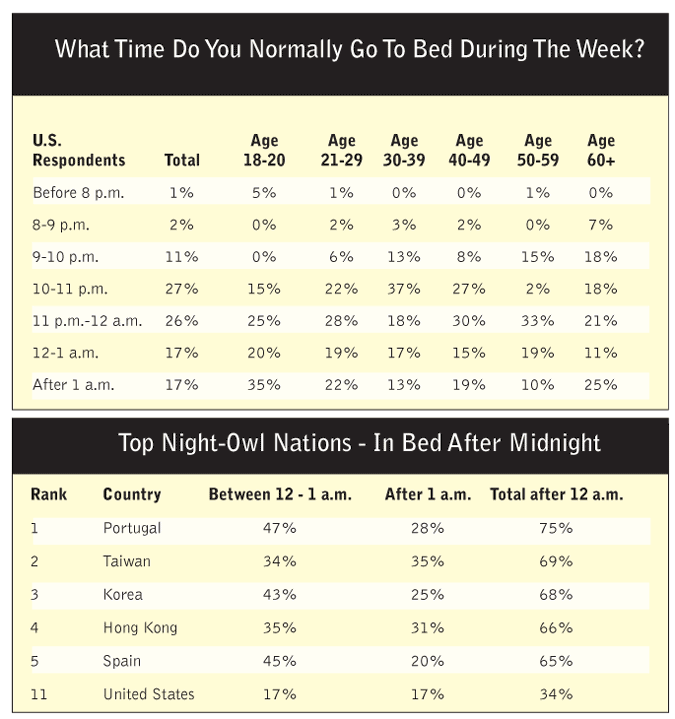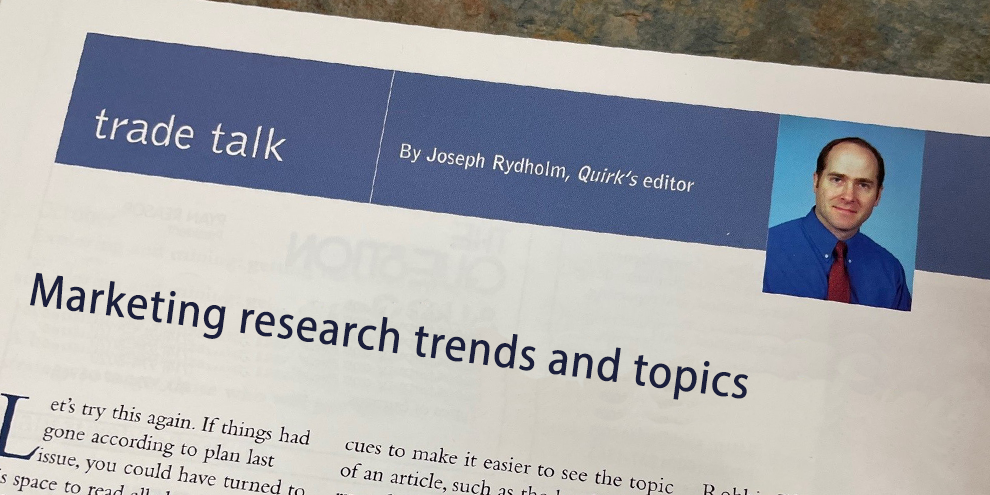As I roll over and stare at the red digits of the clock radio and curse my inability to fall asleep before midnight, it’s comforting to know that there are millions around the world in the same frazzled state of mind. An ACNielsen survey found that 34 percent of U.S. adults go to bed after midnight during the week. Elsewhere in the world bedtime is post-midnight for an average of 37 percent of adults.
By region, 40 percent of adults in Asia-Pacific burn the midnight oil compared with 32 percent of Europeans. Of the top-five globally-ranked night-owl markets, three are Asian; the other two are Mediterranean countries.
The ACNielsen survey was conducted in October 2004 over the Internet in 28 markets across Asia-Pacific, Europe and the U.S. , with more than 14,000 adults participating. In Vietnam , the survey was conducted face-to-face.
Bedtimes differ quite a bit by age in the U.S. Over half (55 percent) of Americans aged 18-20 stay up past midnight. Twenty-five percent of those 60 and older are in bed by 10 p.m.
Early to rise
As for when people start their day, 29 percent of American adults are up by 6 a.m., compared to 25 percent of those in Asia-Pacific and 15 percent of Europeans. Leading the global market-by-market rankings are the Indonesians, with 72 percent out of bed by 6 a.m., followed by 55 percent of Vietnamese, 41 percent of those in the Philippines , and 29 percent of Germans. (The youngest American adults are most likely to sleep in: 40 percent of those aged 18-20 do not get up until after 9 a.m.)
While we have a decent percentage of early birds here the U.S. , we’re also a bunch of slugabeds. Thirteen percent of U.S. adults don’t get out of bed until after 9 a.m., ranking the U.S. second only to Taiwan as a nation of late-risers among the 28 markets studied by ACNielsen (Hong Kong and Spain, each also at 13 percent, were tied for second place with the U.S.). The night-owl Taiwanese, by far, are the last out of bed in the morning, with 26 percent not getting up until after 9 a.m. By region, 8 percent of adults in Asia-Pacific and 7 percent of adults in Europe rose after 9 a.m.
In terms of total sleep hours, the U.S. is in the top 10 when it comes to getting little sleep, with 19 percent getting six hours or less during the week. The Japanese top the list, with 41 percent getting six hours or less. On the other hand, the U.S. also makes the top 10 when it comes to sleeping in, with 18 percent getting nine hours or more during the week. Australians top that list with 31 percent getting nine hours or more. New Zealanders came in second at 28 percent.

Pill popping
Estimates by the National Institutes of Health show that 70 million Americans have some form of sleep disorder. Yet just 6 percent of U.S. households buy over-the-counter sleeping aids according to ACNielsen Homescan consumer panel data. While I haven’t been reduced to popping a pill to fall asleep, ACNielsen data (chart) shows that many folks have been - and that sleeping aids are outselling anti-sleep products in the U.S. by more than two-to-one (though note the percent-change from the previous year).

Work, habit, family
Nearly half of all global respondents selected both “work hours” and “habit” as major factors dictating their sleep schedule. Fifty-four percent of Europeans claimed work hours more than habit (41 percent) determined their sleep schedule, particularly among younger respondents. Both Americans and Asians rated habit as the biggest influence on sleep hours. One-third of Americans cited the influence of “family/children” on their sleep schedule - double that of Europeans (17 percent) and Asians (16 percent).
